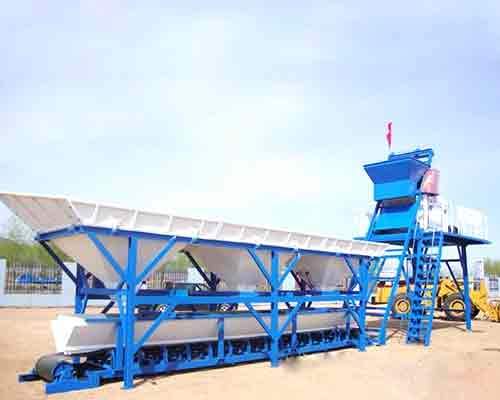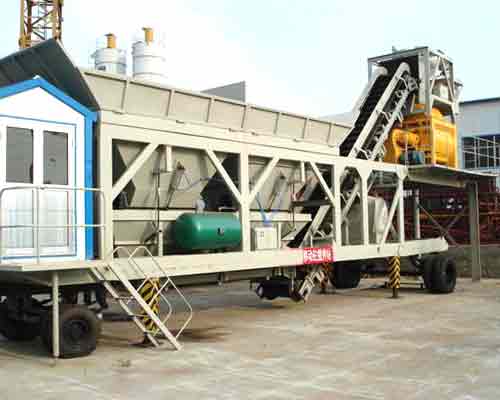In terms of capacity, a concrete batching plant can be classified into small and large types. While according to mobility, the small batching plants are divided into mobile type and stationary type. Our company has made a different series of concrete batching plants. Click here to view more details: https://aimixthailand.com/mobile-concrete-batching-plant-for-sale-in-thailand/.
When it comes to the mobile type and stationary type, there’re a few key differences and similarities between them. They are outlined below.

Differences Between Stationery Concrete Plant And Mobile Concrete Plant
1. The major difference is in mobility.
A small mobile concrete plant comes with inbuilt chassis, which is easy for a trailer to drag around. It’s also equipped with tires, which makes it convenient to work with and maintain. On the other hand, a stationary mixing plant is usually fixed on the specific construction sites. This makes them challenging to move.
2. Small mobile cement plants are only of belt type.
The belt greatly assists in enhancing working efficiency since it has a lower failure rate and a long transporting distance. A pro with a stationary concrete plant is that you can customize the aggregate feeding method. This means that customers can opt for bucket type or belt type based on their construction demands.
3. When looking at the control system, there’s a fully automatic system for control purposes in a mobile type plant.
While for stationary batching plants, an electric control system that’s semi-automatic is adopted by the hopper type; there’s full automatic control for the belt conveyor type.

Similarities Between Stationery Concrete Plant And Mobile Concrete Plant
1. Both the mobile type and the stationary type have small volumes.
This means they can’t cover extensive areas.
2. If you’re on a fixed budget, you’ll find small concrete plants to be very economical.
Investing in one of them at a lower cost can bring returns soon.
3. They have a compact and lightweight structure that make them convenient to disassemble, assemble or move.
4. Ways of accurate measuring.
Concentration weighing and separate weighing for choosing. Both techniques can guarantee high accuracy material measuring.
5. Small mobile and stationary batch plants make use of a twin-shaft concrete mixer.
This concrete mixer makes sure that mixing is efficiently done. Also, the plate and liner are built with wear-resistant materials that greatly boost working efficiency as well as prolong the service life of the mixer. Whether it’s a mobile or a stationary plant, a 25 m3/h concrete plant comes with a JS500 concrete mixer while a 35 m3/h batching plant is installed with a JS750 concrete mixer. Both 60 m3/h and 50 m3/h batching plants suit a JS1000 concrete mixer. Learn more about concrete plants at here: Aimixconcreteplantthailand.com.
6. Modern electric control components make use of the popular foreign Schneider brand.
This makes sure that high quality is achieved as well as to lengthen its life span.
7. Both of them are made with the PLD series cement batching machine.
This makes sure that it has maintained a smooth aggregate delivery as well as a normal aggregate feeding.
If you’re planning to choose between a mobile concrete plant or a stationary plant, ensure to check out these major differences and similarities first!